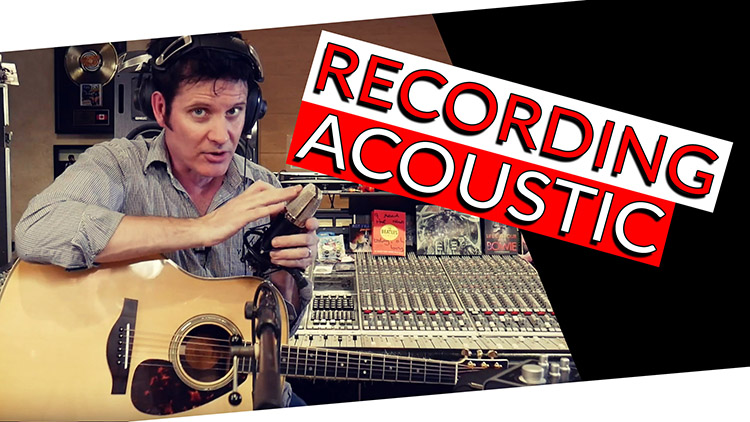One of my first videos on YouTube was called “Recording Acoustic Guitar,” and ever since then I frequently get asked to talk in more detail about recording acoustic guitar.
In today’s video, we’re going to be a lot more thorough than we were in that first video! We’re also going to go through a bunch of different mics, as well as micing techniques.
Although we’ll be using 7 different mics, we’re not doing a shootout between them because they’re all very different. All the of the sound differences that you’re going to hear in this video are going to be a combination of the mic and of course the mic placement.
To keep this as simple as possible, we’re only going to be using an Audient iD4, my trusty Yamaha LL16 acoustic guitar, and the mics listed below. No compression. No EQ. Just straight into the DAW! This is a great real world example that you can recreate in your own studio!
- RELATED: Best Mic for Acoustic Guitar [Under $1000]
- RELATED: What Does a Cloudlifter Do
- RELATED: 5 Best AKG Microphones
The microphones cost between $100 and $300.
These are the mics we used:
• Aspen Pittman DT1- $109: https://amzn.to/2LysL2B
• Lewitt LCT 240 Pro – $150: https://amzn.to/2PGg4pD
• Lewitt LCT 140 – $200: https://amzn.to/2BRYmfX
• Rode NT1 – $230: https://amzn.to/2BT7KjA
• Shure SM57 – $100: https://amzn.to/2LxdyyE
• Roswell mini K47- $300: https://amzn.to/2MX6Zdw
• Lauten LA-220 ($250): https://amzn.to/2BUhx96
Best Practices when Recording Acoustic Guitar
1. Choose Proper Seating
If you can, choose a chair where the arms can either go down or be removed so that there you have full mobility with your guitar. This is especially important if you have an artist recording; you want to make them feel as comfortable as you can.
2. Choosing a boom stand
I personally like using a “double boom” stand. This way I can keep the bulk of the weight on the back of the stand so when the mic is on the other side, it doesn’t droop. You might not think this is a big deal, but you’ll notice a sound difference if it moves. You want to keep the mic in the sample plan when it’s this close. Any slight changes will change the way it’s recorded.
3. Make sure the seat doesn’t creak!
The last thing you want is to hear the seat creak ruining that perfect take.
4. Check that nothing the artist is wearing is hitting the guitar.
This might seem obvious, but buttons on your sleeve, a necklace or anything else between you and the guitar can get picked up by a mic! Be mindful of anything that may hit the guitar.
5. Mic Placement
Depending on the kind of mic you’re using and the sound you’re looking for there are a few different mic placements that you can use. I cover a few micing techniques in the video below!
If you have any questions about how to record acoustic guitar, please leave them in the comments below!
